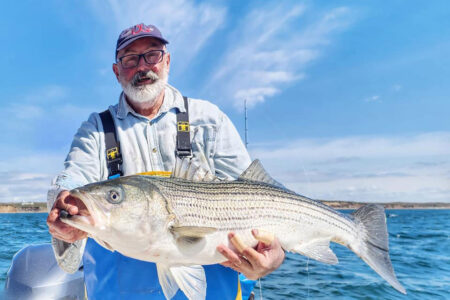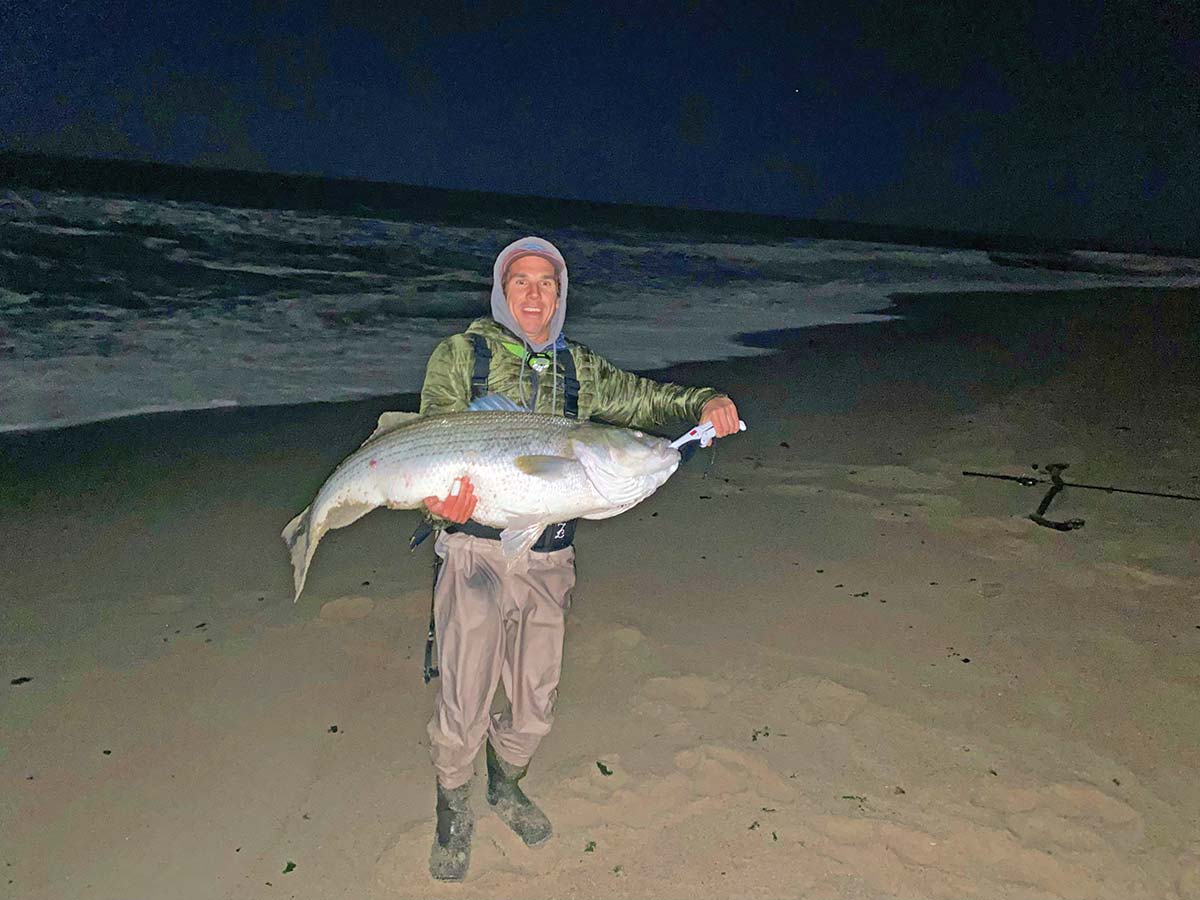
Noted author/angler compares the striper run of yesteryear with last year.
Looking back on decades of fishing, it’s easy to get caught up into the great times when there seemed to be more fish and less pressure. But due to conservation and management of both gamefish and the forage they require it’s often possible to enjoy just as good, if not better fishing, than in the “good old days”.
That’s exactly the case with the recreational striped bass fishery in most areas along the Atlantic Coast. While many anglers might prefer more liberal harvest regulations, though most now seem attuned to the need for caution so as to never watch the resource virtually disappear again.
My perspective as a true old-timer at 86 is probably quite different from most readers as I started saltwater fishing growing up on the south shore of Long Island when conservation was unheard of and there were few management practices in place. There was a 16-inch fork length minimum on striped bass, but both recreational and commercial fishermen could catch all they wanted year-round – and that applied to all saltwater fish in a state where the Conservation Commissioner owned a commercial fishing business.
Fortunately, there were a few very important exceptions to the fisheries “wild west.” The Chesapeake Bay states protected roe-laden female stripers during the spring spawning season when smaller resident males turned the rivers white with their milt and provided strong year classes about every 6 years which maintained the Atlantic coastal fishery all the way up to New England for many years.
The Delaware and Hudson rivers were in terrible shape, and their contributions to the coastal fishery were almost ignored. Ironically, General Electric “helped out” in that regard as Polychlorinated Biphenyl (PCB) in discharges into the Hudson River made eating fish from the river dangerous, even if you could overcome the taste of the river in fillets. The New York Health Department finally shut down the commercial fishery there, and striped bass soon made a comeback which has provided NY/NJ Bight anglers with superior March to June fishing which offsets whatever problems may occur with the later coastal migration.
Striper fishing in Raritan Bay is now so good that it’s hard to believe that they haven’t always been there.
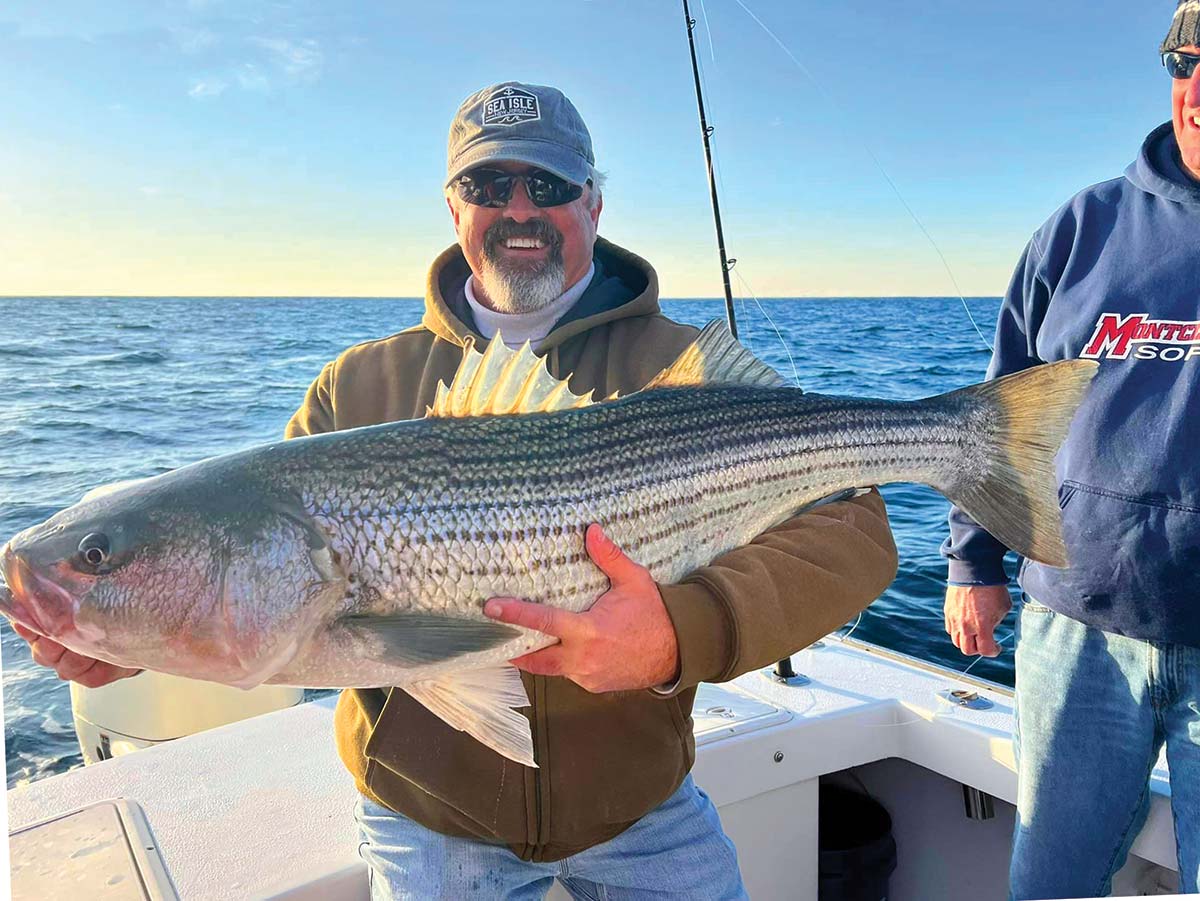
Glory Days
Tony Arcabascio, better known as Tony Maja, grew up on Staten Island and never saw a bunker there until he came upon a dying one while crabbing. When a run of large weakfish started, Great Kills anglers had to run across to the fish traps in Sandy Hook Bay in order to get chunking bait. It wasn’t until the 1980s that both bunker and big bass built up in the harbor. Before the New York season opened on May 1, Tony and I enjoyed great release chunking for the long-missing linesiders right outside the harbor with no competition in April.
Tony credits the late Lou Figurelli and his Natural Resources Protective Association for working with the politicians to outlaw netting in Raritan Bay which allowed bunkers to build up even as New Jersey allowed bunker seining on its side.
Though there was only limited party boat fishing for stripers historically in NY/NJ Bight, it’s now a standard for some skippers despite the strict regulations. It wasn’t many years ago that I would have considered it impossible to run a party boat fishery in which customers were required to release their biggest fish along with most of their other catch. Yet, the fishing has been so good that a new generation of party boat anglers has accepted the conservation requirements that have made it possible.
It’s now common to get reports of high hooks with 20 or more bass. Of those they may walk off with one over 28 inches, while New Jersey anglers may add a smaller Bonus Bass derived from the game fish state’s old commercial quota, if such smaller bass are in the mix. That’s at least enough for dinner, and only a minor removal from the spawning stock. Contrast that with what would have been the case in the past when the angler would have kept all of his catch. They may have been sold or given away or ended up in a freezer before getting frostbitten — but fish big enough to eat weren’t released. The difference between that old attitude of “someone will want it” to recycling fish has been the main factor in the present abundance.
When I started writing my saltwater column in the Newark Star-Ledger, it didn’t take a very big striper for an angler to get a mention, but last year 40-pounders were being treated almost as trash fish preventing a hook-up with the new definition of “keeper” as a striper smaller than the maximum length.
Sportsmen who had spent years trying to catch a trophy striper were often rewarded with one last year on a party boat, and boaters relatively new to the sport were able to quickly become experts by snagging bunkers from huge schools without having to spend lots of time just trying to locate the bait.
It used to be that charter skippers and bass pros considered the best bet for catching a trophy bass was skillfully trolling a bunker spoon on wire line in the fall over structure such as Shrewsbury Rocks or Ambrose Channel. Even newcomers to that technique were releasing 40-50-pounders through most of last season by trolling over sandy bottoms in 60 feet almost three miles offshore where snagging bottom only resulted in hooking a clam shell.
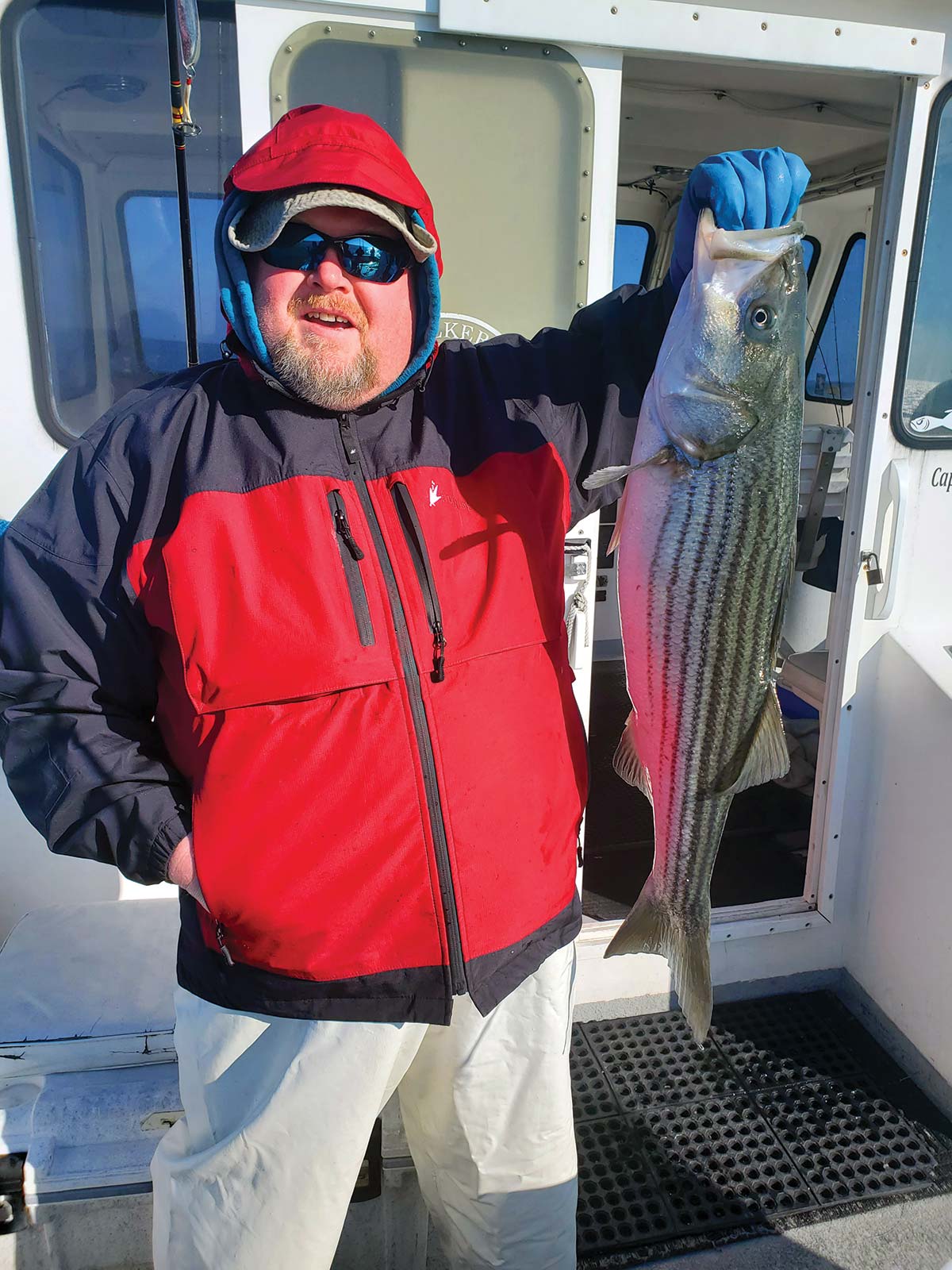
Born To Run
Another important restriction was the Massachusetts prohibition on netting stripers. That basically made everyone a commercial fisherman as even doctors and lawyers ran to the fish house with whatever they caught though stripers were only worth 20 to 25 cents a pound in the 1960s. Of course, money was worth a lot more at that time – but no one got rich by selling stripers in the Bay State.
Though there were lots of bass produced by the strong year classes, you still had to know what you were doing. The Fisherman Magazine wasn’t available until later in the 60s to provide the details of local fisheries, and the pros weren’t about to spill their secrets and encourage competition. It was hard enough learning how to catch winter flounder and blowfish from the causeway bridges to Jones Beach, and rumors of big stripers from the same locations at night were out of my league. It wasn’t until I got a car that fishing opportunities opened up. Charter boats at Montauk caught lots of mostly school stripers by trolling wire lines in the fall and surfcasting opportunities were much better.
After completing 4 years as a naval officer, I got a job with the manufacturer’s rep for Garcia, and was soon traveling in New England areas I had only read about. I was fortunate enough to become friendly with Bunny DiPietro at Red Top Tackle in Buzzards Bay, and the great wood luremaker Stan Gibbs who taught me how to work his pencil poppers which I went on to fish over much of the world for many other species.
Jimmy Andrews taught me about casting eels at night in Pleasant Bay, where my search for a “50” produced a 61-pounder. And he introduced me to Capt. Bud Henderson who invited me on a few of his fall handlining trips from Cape Cod to Nantucket. As we approached the island, there appeared to be a garbage dump ahead of us. Hundreds of sea gulls were dipping into a huge mass of surfacing fish and squid. As we headed into the fish, an adult herring swam by the side of the boat with a medium striper close behind before it paused and made eye contact with this strange creature prior to getting back to business.
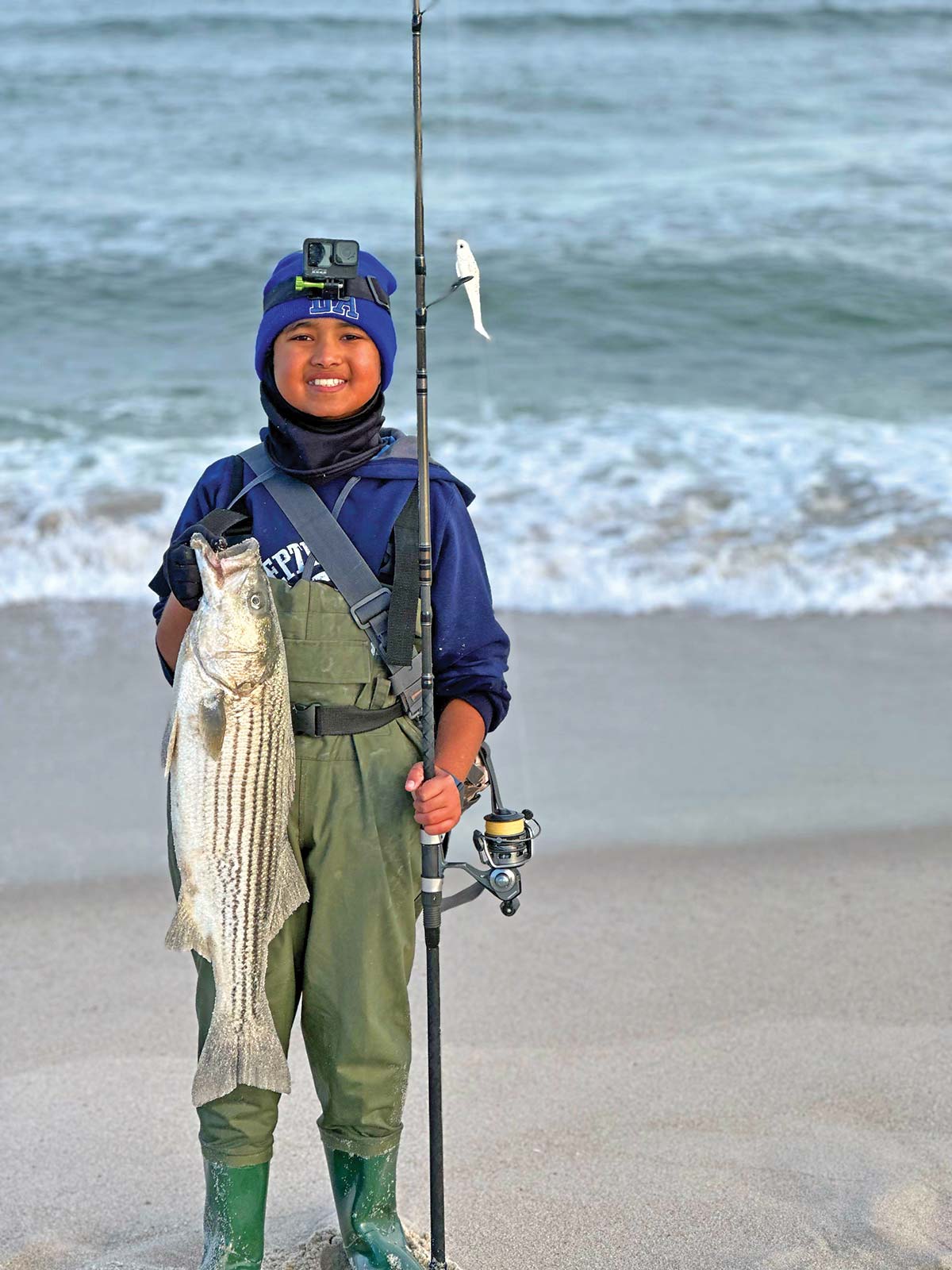
Bud trolled bucktails and pork rind on heavy mono handlines with rubber snubbers plus another from a short outrigger, and was soon filling the halibut box on his 26-foot sea skiff while I used my surf spinner to cast over the rigger with a popper to hook up every time. It didn’t take long before we headed back with 600 pounds (mostly 10 to 14 pounds at that time} while never seeing another boat. I’ve always wondered if the eventual collapse of the striper fishery would have come even sooner if netters had access to that incredible concentration.
Unfortunately, Bud’s last trip that fall didn’t end as well when he found out the price had dropped to 12 cents a pound after Montauk beach haul seiners had flooded the New York market by eliminating entire schools of big migrating bass. Long Island anglers, including a teenaged Fred Golofaro, spent years trying to end that practice as Save Our Stripers fought the Assembly Speaker who was the son of the former Conservation Commissioner.
Though striped bass management has become accepted as necessary in recent years, it was harder to do with menhaden. While bunker may be the cheapest fish in the sea, when taken in huge quantities by reduction industry boats they are the basis for a powerful corporation. Fortunately the Atlantic States Marine Fisheries Commission (ASMFC) has adopted regulations which incorporate the surplus necessary as forage for fish, marine mammals and birds.
As one who has experienced both the highs and lows of striped bass fishing over many decades, I can assure readers that it’s now at a peak and should stay that way if we stick to our guns in management of a great resource. We took it for granted once as big year classes kept coming along; we now have the tools with which to maintain fishing for future anglers even should Mother Nature not smile on us forever.



